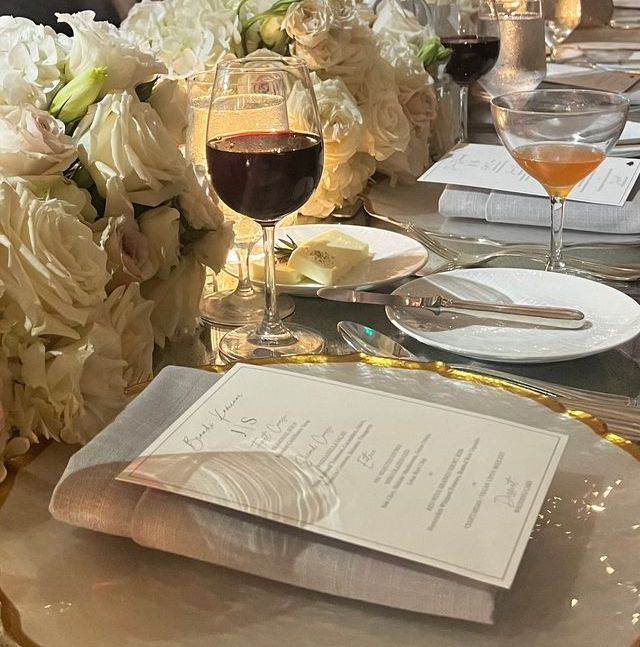Red Wine, Tabletop, White Wine
Difference Between White And Red Wine Glasses
Wine glasses come in all shapes and sizes, and there’s so much more to choosing a glass shape than aesthetics alone.
Each glass is specifically designed to highlight the best characteristics of your wine of choice, enhancing the overall enjoyment of each sip. For example, the purpose of a white wine glass is to preserve the delicate floral aromas and crisp, cool temperature, while a red wine glass is made to smooth and open those bolder tasting notes.
There are many features behind the anatomy of a wine glass that help to accentuate the wine and give you the best tasting experience possible. Below are some of the key differences between red and white wine glasses and why you need one for each.
Key Differences Between Red Wine Glasses and White Wine Glasses
Bowl
Typically red wine glasses have a larger bowl than white wine glasses. This seemingly small difference has the power to change your entire drinking experience. Red wine glasses are designed to mellow the strong tannins and allow the aromas and flavors of the wine to fully release. To maintain cool temperatures and preserve the citrus aromas, white wine glasses usually have a smaller body.
Stem length
White wine glasses normally have longer stems than red wine glasses. Since most white wines are served at cooler temperatures than red, a longer stem helps to prevent hands from warming the contents within the glass. Stemless wine glasses are ideal for red wine as it is not negatively affected by the gentle warming of being held in the hand.
Shape
Shape is probably one of the most noticeable distinctions between red and white wine glasses. Each glass shape is designed to fully highlight the features of your wine and give you the best tasting experience. The shape of the glass has the ability to deliver flavors and aromas of the wine to the nose and mouth in different ways.
The Difference Between Red and White Wine
Red and white wine are vastly different - from sweetness to acidity to even the way they are made. Here are some of the main differences between red and white wine and why they might impact your decision on which style of glass to use:
Grapes
The most obvious difference between red and white wine is the grapes used to make them. There are around 50 different red grape varieties in the world, but here are some of the most popular:
- Cabernet Sauvignon
- Merlot
- Cabernet Franc
- Petit Verdot
- Malbec
White wine is mainly made from grapes that are yellow and green in color. The most popular grapes used to make white wine include:
- Chardonnay
- Sauvignon Blanc
- Pinot Gris
- Riesling
- Pinot Noir
Process of Making Wine
The processes used to make wine can greatly affect the outcome of the flavor and texture of the contents. Most of the steps in the wine-making process for both red and white wines are the same until it is time for fermentation.
Red wines are aged and fermented in traditional oak barrels, while white wines are fermented in stainless steel tanks. The oak barrels bring out the smokey and dark flavors of red wine. Steel tanks give the winemaker the ability to control the temperature of white wine during the fermentation process. White wines are also fermented without the skins, making them lighter and sweeter in taste than red wines.
Taste
White and red wines are vastly different in taste. White wines are mostly citrus and fruity in flavor, while red wines tend to be rich in deep berry flavors. White wines are crisp and dry on the palate and red wine has a smooth and creamier feel. Though not all white wines are sweet, white wine is higher in sugar content by almost 64% than most red wines. If you prefer a sweeter sip, white wine might be the best choice.
Why You Need Different Glasses for Red and White Wine
Flavor
The shape of the bowl and the opening of a wine glass affects the flavors you get to taste. Larger bowls will allow more air exposure, providing a smoother sip and allowing all of the deep flavors and sharp tannins to spread across your palate. A smaller bowl seals the aromas and flavors tightly, directing the florals and crisp citrus of white wine to the back of the palate.
Aroma
The aromas of your wine reveal most of its flavors, allowing you to sense how the wine will taste. White wines often need a smaller glass to preserve the gentle and subtle aromas, so most display a narrow bowl, whereas red wine glasses usually have wider bowls and rims, bringing all of the scents directly to the nose.
Temperature
The temperature of your wine can make a big difference. Since white wines are better served cooler than room temperature - between 40-45° degrees Fahrenheit - using a glass with a longer stem helps avoid your hands from warming the contents. Red wine can be served between 60° F and 65° F, slightly warmer than white wines, which is why it is perfectly acceptable to use a stemless glass for red wine.
Different Types of Wine Glasses
Red Wine
Red wines are deeply dark in color, taste, and smell. Red wines carry many layers of flavors and aromas, ranging from cherry, plum, and cocoa to coffee, spice, and bell pepper. Red wine is typically drier and more bitter in taste than white wine. To experience the balance of a full-bodied red wine, try one of these red wine glasses:
-
Bordeaux Glass - This is the tallest of the red wine glass types. These glasses have a broad bowl, creating distance between the mouth and the wine. This allows the ethanol to evaporate and makes for a smoother sip. This glass brings out all of the fruit flavors, allowing you an all-around experience of your wine. The Bordeaux glass is best suited for full-bodied red wines, such as Bordeaux, Cabernet, or Merlot.
-
Burgundy Glass - The Burgundy glass is both the shortest and widest red wine glass type. It has a very thin rim, perfect for sipping lighter-bodied reds with more delicate flavors and nuanced aromas.
-
Shiraz Glass - This shape was developed between 1993-1995. These wine glasses are most suitable for light and medium-bodied red wines. Displaying a narrow body and opening, the Shiraz is designed to trap aromas and help to dim harsher flavors of spice as it allows the wine to slowly flow to the palate.
White Wine
White wine flavors are often crisper than those of red wines. Characteristics of white wine can include citrus, freshly cut grass, stone fruits, and aromatic hints of floral. White wines are fermented without skins, making them sweeter and lighter in taste than most red wines. To fully embrace the sharper, crisper flavors of a white wine, consider using one of these white wine glasses:
-
Chardonnay Glass - The Chardonnay wine glass is classified as the biggest of the white wine glass types. Like a Burgundy glass, the Chardonnay has a larger opening, so the wine can aerate at its widest point. It has a longer stem than a red wine glass to avoid warming.
-
Sauvignon Blanc Glass - The body of a Sauvignon Blanc is wider at the bottom and narrower at the opening. These glasses have a flared shape at the widest point, though it’s not just for looks. This is to allow the fruit flavors and aromas fully develop to the top of the glass.
-
Montrachet Glass - The Montrachet glass is made for experiencing the multiple layers of a full-bodied white wine. This type of glass has an equally large-rounded body and opening. This allows the wine to evenly flow from tongue to palate, revealing the intensity of crisp, acidic flavors. While these glasses pair well with any white wine, they are also thin and fragile, something to consider when looking for the best glass for your home’s collection.
-
Riesling Glass- This is the smallest glass of the white wine glass style. The riesling glass has a small, rounded bowl that narrows towards the rim. This helps to cut down the intensity of flavors and sweetness by sending the contents to the back of the mouth.
Choose The Ideal Glass To Open Up The Flavors of Your Wine.
Whether you consider yourself an avid wine connoisseur or a vino novice, you’ll need to know which glass to choose for your red or white wine. There is a reason behind the design of each type of wine glass and having the right one will not only bring your wine to life but will make you smile each and every time you bring it out of the cabinet.
Discover how Beverly Hills restaurateur and home entertaining expert Fran Berger curates the simple details that create magical moments in your home. Her decades of experience and mastery of luxury home and restaurant design help her curate perfect, bespoke experiences for her clients. Her blog offers more insights and inspiration for you to enjoy.





















